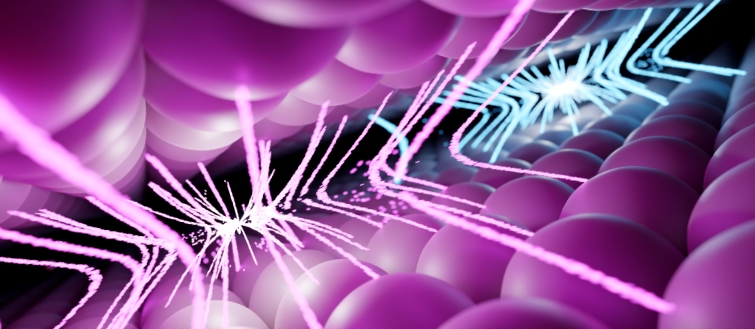We reach more than 65,000 registered users in Dec!! Register Now

Sculpting quantum materials for the electronics of the future
- March 21, 2023
- 22 Views
- 0 Likes
- 0 Comment
The development of new information and communication technologies poses new challenges to scientists and industry. Designing new quantum materials - whose exceptional properties stem from quantum physics - is the most promising way to meet these challenges. An international team led by the University of Geneva (UNIGE) and including researchers from the universities of Salerno, Utrecht and Delft, has designed a material in which the dynamics of electrons can be controlled by curving the fabric of space in which they evolve. These properties are of interest for next-generation electronic devices, including the optoelectronics of the future. These results can be found in the journal Nature Materials.An international team led by the UNIGE has developed a quantum material in which the fabric of space inhabited by electrons can be curved on-demand.
The telecommunications of the future will require new, extremely powerful electronic devices. These must be capable of processing electromagnetic signals at unprecedented speeds, in the picosecond range, i.e. one thousandth of a billionth of a second. This is unthinkable with current semiconductor materials, such as silicon, which is widely used in the electronic components of our telephones, computers and game consoles. To achieve this, scientists and industry are focusing on the design of new quantum materials.
Thanks to their unique properties - especially the collective reactions of the electrons that compose them - these quantum materials could be used to capture, manipulate and transmit information-carrying signals (for example photons, in the case of quantum telecommunications) within new electronic devices. Moreover, they can operate in electromagnetic frequency ranges that have not yet been explored and would thus open the way to very high-speed communication systems.
A warp drive
‘‘One of the most fascinating properties of quantum matter is that electrons can evolve in a curved space. The force fields, due to this distortion of the space inhabited by the electrons, generate dynamics totally absent in conventional materials. This is an outstanding application of the principle of quantum superposition,’’ explains Andrea Caviglia, full professor at the Department of Quantum Matter Physics in the Faculty of Science of the UNIGE and last author of the study.
After an initial theoretical study, the international team of researchers from the Universities of Geneva, Salerno, Utrecht and Delft designed a material in which the curvature of the space fabric is controllable. ‘‘We have designed an interface hosting an extremely thin layer of free electrons. It is sandwiched between strontium titanate and lanthanum aluminate, which are two insulating oxides,’’ says Carmine Ortix, professor at the University of Salerno and coordinator of the theoretical study. This combination allows us to obtain particular electronic geometrical configurations which can be controlled on-demand.
One atom at a time
To achieve this, the research team used an advanced system for fabricating materials on an atomic scale. Using laser pulses, each layer of atoms was stacked one after another. ‘‘This method allowed us to create special combinations of atoms in space that affect the behavior of the material,’’ the researchers detail.
While the prospect of technological use is still far off, this new material opens up new avenues in the exploration of very high-speed electromagnetic signal manipulation. These results can also be used to develop new sensors. The next step for the research team will be to further observe how this material reacts to high electromagnetic frequencies to determine more precisely its potential applications.
List of Referenes
- Edouard Lesne, Yildiz G. Saǧlam, Raffaele Battilomo, Maria Teresa Mercaldo, Thierry C. van Thiel, Ulderico Filippozzi, Canio Noce, Mario Cuoco, Gary A. Steele, Carmine Ortix, Andrea D. Caviglia. Designing spin and orbital sources of Berry curvature at oxide interfaces. Nature Materials, 2023; DOI: 10.1038/s41563-023-01498-0
Cite This Article as
No tags found for this post









